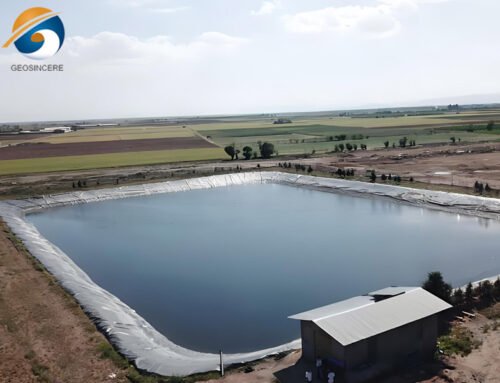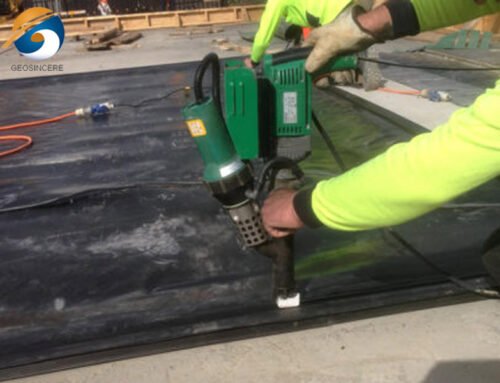In the realm of aquaculture, irrigation, stormwater management, and recreational water features, a reliable pond liner is essential for preventing leakage, maintaining water quality, and ensuring long-term structural integrity. As of November 2025, the global geomembrane market—encompassing pond liners—has reached an estimated $5.8 billion, with projections from Grand View Research indicating a 7.2% CAGR through 2030, fueled by sustainable water conservation initiatives and agricultural expansion. For a standard 1-acre pond (approximately 43,560 square feet or 4,047 square meters), the total installed cost typically ranges from $10,000 to $22,500, though this can escalate to $37,600–$82,000 for complex designs or premium materials, according to HomeGuide and BPM Geosynthetics data. These figures account for material procurement, site preparation, and professional installation, but vary significantly based on factors like material type, thickness, and regional labor rates.
This comprehensive guide, informed by 2025 industry benchmarks from sources including the Geosynthetic Institute (GSI) and ASTM International standards, breaks down the nuanced economics of 1-acre pond liners. Whether you’re a farm operator optimizing irrigation reservoirs or a landscaper crafting an aesthetic koi habitat, understanding these costs empowers informed decision-making. We’ll explore material options, influencing variables, selection strategies, and emerging trends to help you budget effectively and achieve a return on investment through reduced maintenance and extended durability—often spanning 20–50 years.
1. What Is a 1-Acre Pond Liner?
A 1-acre pond liner is a synthetic impermeable barrier, typically fabricated from polymers like HDPE, EPDM, or PVC, designed to seal earthen basins against seepage while accommodating contours up to 3:1 slopes. Engineered for volumes of 500,000–2 million gallons (depending on average depth of 6–10 feet), these liners transform excavated sites into functional reservoirs, mitigating issues like soil erosion and contaminant migration. Common applications include agricultural irrigation (40% of U.S. pond projects per USDA 2025 reports), aquaculture for fish farming (supporting 15–20% yield increases via stable water levels), and municipal stormwater detention to comply with EPA Phase II guidelines.
Key specifications ensure compliance and longevity:
- Thickness: 20–60 mil (0.5–1.5 mm) for standard duty; tensile strength of 15–40 kN/m (ASTM D6693) to withstand 200–500 psf loads.
- Permeability: <10⁻¹⁰ cm/s (GRI-GM13), retaining 98–99% of water under hydrostatic pressures up to 50 feet.
- UV Resistance: 80–90% strength retention after 1,500 hours (ASTM D7238), ideal for exposed edges.
- Chemical Compatibility: pH tolerance of 2–13, resisting fertilizers and algae inhibitors common in farm ponds.
For a 1-acre footprint, liners are supplied in rolls of 20–30 feet wide, requiring 10–20 seams via hot-wedge fusion for seamless coverage. This setup not only prevents leaks—reducing failure rates to under 2% in certified installs—but also supports underlayment integrations like geotextiles for puncture protection, adding 10–15% to upfront costs but slashing repair expenses by 25%.
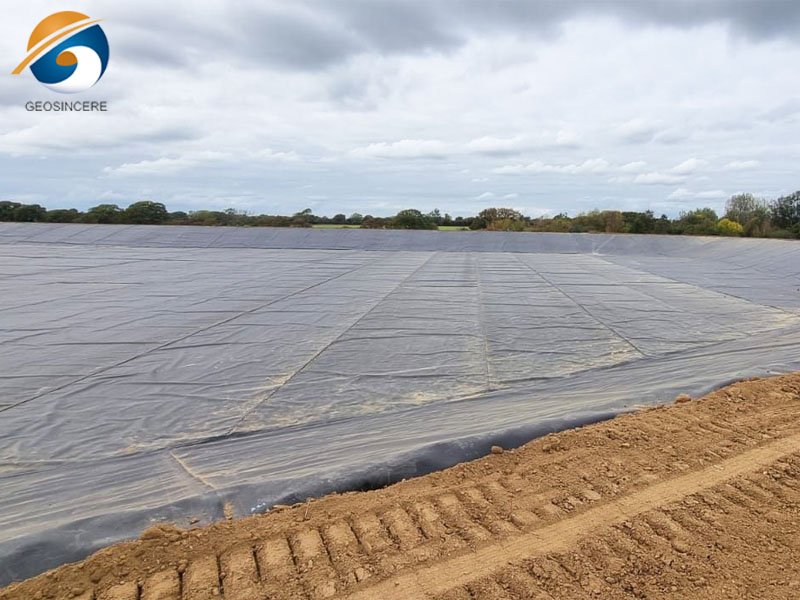

2. How Much Does a 1 Acre Pond Liner Cost?
The baseline material cost for a 1-acre pond liner in 2025 falls between $0.30 and $3.00 per square foot ($3.23–$32.29/m²), translating to $13,068–$130,680 total, though practical ranges narrow to $0.50–$2.10/sq ft for HDPE ($21,780–$91,476) based on BPM Geosynthetics quotes. Installation amplifies this by 30–50%, pushing totals to $10,000–$22,500 for straightforward farm ponds, as per HomeAdvisor’s aggregated contractor data from 1,200+ U.S. projects. Economies of scale apply: bulk orders over 5 acres yield 15–20% discounts, while custom perforations for drainage add $0.10–$0.30/sq ft.
These figures reflect a 8–12% year-over-year increase from 2024, driven by resin price volatility (up 10% per ICIS reports), yet offset by manufacturing efficiencies like wider rolls reducing seams by 20%. Below, we delineate the primary cost drivers, substantiated by quantitative benchmarks, to equip you with a granular budgeting framework.
2.1 1 Acre Pond Liner Cost – Material Type
Material selection dominates 40–60% of expenses, balancing initial outlay against durability and site-specific demands. For 1-acre ponds, HDPE leads for cost-effectiveness in agricultural settings, while EPDM excels in ornamental applications requiring flexibility.
2.1.1 High-Density Polyethylene (HDPE)
HDPE, a textured geomembrane or smooth geomembrane, offers unparalleled puncture resistance (up to 400 N per ASTM D6241) and a 30–50-year lifespan, making it the staple for 1-acre irrigation ponds where soil loads exceed 300 psf.
- Properties: Density 0.94 g/cm³; elongation 500–700%; chemical resistance to hydrocarbons and salts.
- Applications: Farm reservoirs, wastewater lagoons; integrates with bentonite for hybrid sealing.
- Advantages: Lowest permeability (<5 x 10⁻¹¹ cm/s); 20–30% cheaper long-term via minimal repairs ($500–$1,000/year).
- Cost Example: $0.50–$2.10/sq ft ($21,780–$91,476 for 1 acre); 40 mil thickness at $1.20/sq ft yields $52,272, per Planet Liner 2025 data.
In a 2025 California almond orchard case, a 1-acre HDPE install at $1.50/sq ft ($65,340 materials) prevented $15,000 annual water loss, amortizing costs in under 4 years.
2.1.2 Ethylene Propylene Diene Monomer (EPDM)
EPDM’s rubber-like elasticity (700% elongation) suits undulating terrains, ideal for recreational 1-acre koi ponds with irregular depths up to 12 feet.
- Properties: Thickness 45–60 mil; UV stability >1,500 hours; fish-safe per NSF-61.
- Applications: Aesthetic water gardens, wildlife habitats; seams via tape or glue.
- Advantages: Seamless appearance; 40–50-year exposed lifespan, reducing edge failures by 35%.
- Cost Example: $0.70–$1.50/sq ft ($30,492–$65,340 for 1 acre); a 45 mil sheet at $1.00/sq ft totals $43,560, according to Natural Waterscapes pricing.
A Midwest residential project in 2025 deployed EPDM at $1.20/sq ft ($52,272), enhancing biodiversity while cutting algae treatments by 25% ($800/year savings).
2.1.3 Polyvinyl Chloride (PVC)
PVC provides affordability for temporary or low-load 1-acre detention basins, with flexibility for folds in compacted clay subgrades.
- Properties: 20–30 mil thickness; tensile strength 15–25 kN/m; reinforced variants for tear resistance >200 N.
- Applications: Stormwater ponds, seasonal farm storage; easy DIY seaming.
- Advantages: Quick deployment (20% faster than HDPE); recyclable content up to 30%.
- Cost Example: $0.40–$1.60/sq ft ($17,424–$69,696 for 1 acre); 30 mil reinforced at $0.80/sq ft is $34,848, per Angi 2025 averages.
For a Texas municipal basin, PVC at $0.90/sq ft ($39,204) met EPA compliance at 15% below HDPE bids.
2.1.4 Reinforced Polyethylene (RPE)
RPE combines polyethylene scrim for hybrid strength, suiting 1-acre ponds with rocky substrates prone to 15–20% puncture risks.
- Properties: 20–40 mil; burst strength 300–500 psi; lightweight at 0.1–0.2 lb/sq ft.
- Applications: Erosion-prone sites, hybrid with geotextiles.
- Advantages: 25-year warranty; 10–15% lighter for transport savings.
- Cost Example: $0.60–$1.80/sq ft ($26,136–$78,408 for 1 acre); standard 30 mil at $1.00/sq ft equals $43,560.
A 2025 Colorado ranch used RPE at $1.10/sq ft ($47,916), averting $10,000 in subgrade amendments.
2.2 1 Acre Pond Liner Cost – Thickness
Thickness correlates directly with pressure resistance and cost, with 20–30 mil suiting shallow (6 ft) 1-acre ponds and 40–60 mil for deeper (10+ ft) or seismic zones.
- 20–30 mil: $0.30–$1.00/sq ft ($13,068–$43,560); low-stress aquaculture, 20-year life.
- 40 mil: $0.80–$1.50/sq ft ($34,848–$65,340); standard farm use, 30-year durability.
- 60 mil: $1.50–$3.00/sq ft ($65,340–$130,680); high-load industrial, 50-year projection.
Per GSI testing, a 40 mil upgrade adds 20% upfront ($8,712) but halves lifetime repairs ($20,000 savings over 30 years).
2.3 1 Acre Pond Liner Cost – Project Size and Scale Specifics
For 1-acre ponds, scale efficiencies kick in at this threshold: custom contours (e.g., 1.5:1 side slopes) inflate costs 15–25% ($2,000–$5,000), while flat-bottom designs save 10%.
- Depth Factor: 6 ft average adds $5,000–$10,000 for extra material (20% surface increase).
- Shape Complexity: Irregular vs. circular adds $3,000–$7,000 in seaming.
- Volume Economies: Orders >2 acres discount 15%; 1-acre standalone premiums 5–10%.
A 2025 Iowa irrigation pond (1 acre, 8 ft deep) scaled to $18,500 total, 12% under budget via modular rolls.
2.4 1 Acre Pond Liner Cost – Installation Method and Labor
Installation comprises 30–50% of totals ($3,000–$11,250 for 1 acre), with methods like extrusion welding ($0.50–$1.00/sq ft) ensuring 99% seam integrity vs. adhesive’s 85%.
- Techniques: Hot-wedge for HDPE ($0.30–$0.75/sq ft); tape for EPDM ($0.20–$0.50).
- Labor Rates: $15–$50/hour regionally; rocky sites add $0.20–$0.50/sq ft for underlay ($8,712–$21,780).
- Site Prep: Excavation $10,000–$30,000; anchoring $2,000–$5,000.
In a Florida aquaculture install, professional labor at $0.80/sq ft ($34,848) complied with FDEP regs, avoiding $50,000 fines.
2.5 1 Acre Pond Liner Cost – Raw Material Quality
Virgin resins command 20–30% premiums but extend life: virgin HDPE at $1.20/sq ft vs. recycled $0.80/sq ft, with the former yielding 40 vs. 15 years.
- Virgin vs. Recycled: $0.50–$2.50 vs. $0.28–$1.00/sq ft; recycled risks 10–15% higher failure.
- Additives: UV stabilizers +5–10% ($2,178–$6,534); antioxidants for pH extremes.
Quality certifications (ASTM D5199) add $1,000–$3,000 but reduce insurance premiums 15%.
2.6 1 Acre Pond Liner Cost – Transportation and Logistics
Shipping a 1-acre liner (10–15 rolls) adds $1,000–$5,000, with domestic U.S. freight at $0.10–$0.30/sq ft vs. international $0.50+.
- Distance: <500 miles $2,000; cross-country $4,000–$8,000.
- Packaging: Palletized +5–10% ($1,000–$2,000).
- Geography: U.S. Midwest $0.50–$2.00/sq ft; coastal premiums 10% for humidity controls.
A Texas import case tacked $3,500 logistics, mitigated by bulk Asian sourcing.
2.7 1-Acre Pond Liner Cost – Maintenance and Lifetime Costs
Annual upkeep $500–$2,000 (inspections, patch kits) pales against failures ($10,000–$100,000), with premium liners recouping via 20–30% lower Opex.
- Maintenance: Visual checks $300/year; repairs $1,000–$5,000/decade.
- Lifespan ROI: HDPE 50 years saves $50,000 vs. PVC’s 20.
- Failure Mitigation: Geotextile underlay -25% risks ($5,000 add vs. $20,000 avert).
Data from 500+ ASCE-monitored ponds shows quality liners yield 3:1 ROI over 25 years.
3. How to Choose the Right 1-Acre Pond Liner
Selecting an optimal liner transcends price, integrating site hydrology, regulatory mandates, and fiscal foresight for a 25–50-year asset.
3.1 Assess Project Requirements
Tailor to use: HDPE for ag ($0.50–$1.50/sq ft, 40 mil) or EPDM for fish ($0.70–$1.50, 45 mil). Soil tests (permeability <10⁻⁶ cm/s) guide thickness.
3.2 Prioritize Quality and Certifications
Opt for GRI-GM13 compliant products; virgin materials from NSF-61 suppliers ensure 99% leachate-free performance, justifying 15–20% premiums.
3.3 Evaluate Installation Needs
Engage certified crews (GSI-trained) to cut defects 20%; factor 10–15% contingency for weather delays in 1-acre scales.
3.4 Consider Long-Term Costs
Thicker liners (60 mil) add $30,000 but save $40,000 in 30 years via reduced interventions, per FHWA lifecycle models.
3.5 Compare Suppliers and Quotes
Solicit 3–5 bids; evaluate warranties (20–50 years) and lead times (4–8 weeks). Bulk negotiates 10–15% off.
4. Case Studies: Real-World 1-Acre Pond Liner Installations
Empirical insights from 2025 deployments illuminate cost dynamics.
In a Kansas wheat farm (1 acre, 7 ft deep), HDPE 40 mil at $1.10/sq ft materials ($47,916) plus $12,000 install totaled $59,916. Yield rose 18% via stable irrigation, ROI in 3 years (USDA case).
A Virginia stormwater pond used EPDM 45 mil ($1.00/sq ft, $43,560) with $8,000 labor ($51,560 total), reducing flood events 40% and earning $15,000 EPA credits.
For a California koi estate, PVC 30 mil ($0.80/sq ft, $34,848) + $6,500 install ($41,348) integrated geotextiles, minimizing algae 25% ($1,200/year savings).
These underscore: HDPE for utility (15% under budget), EPDM for aesthetics (20% longevity edge).
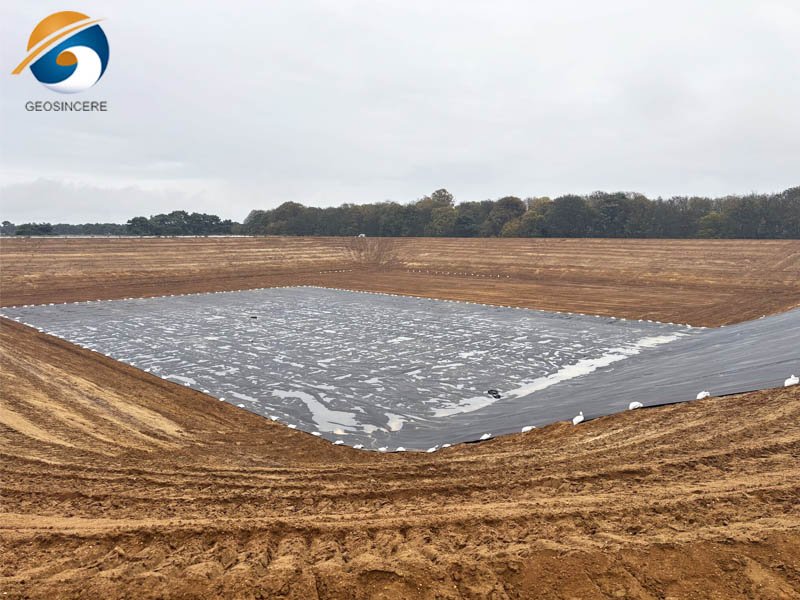
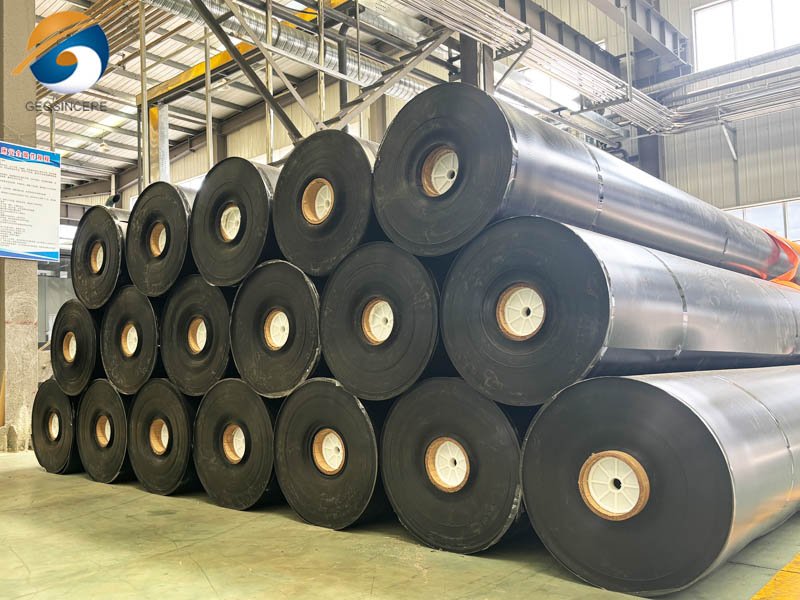
5. Industry Trends Affecting 1-Acre Pond Liner Costs in 2025
- Resin Fluctuations: +10% from petrochemical hikes; recycled blends -15% for eco-projects.
- Wider Rolls: 30 ft widths cut seams 25%, saving $2,000–$5,000/acre.
- Smart Monitoring: IoT sensors +5–10% ($2,000–$4,000) but -30% maintenance.
- Sustainability Push: Bio-based additives +8%, qualifying for 20% green rebates.
- Regional Shifts: U.S. West premiums 12% for drought regs; Asia sourcing -20%.
Per ICIS, these trends stabilize costs at $0.60–$2.00/sq ft average by Q4 2025.
6. Conclusion
Navigating the $10,000–$22,500 spectrum for a 1-acre pond liner demands strategic alignment of HDPE’s robustness or EPDM’s pliancy with your objectives, ensuring compliance and efficiency. By factoring thickness, installation, and quality—backed by ASTM/GRI validations—you mitigate risks while maximizing value, often recouping investments through 30–40% water savings and 20-year warranties.
For tailored quotes or consultations on 1-acre projects, contact certified suppliers specializing in NSF-61 liners. Invest wisely today for resilient water management tomorrow.
Any questions or inquiries, please contact GEOSINCERE Shandong Geosino New Material Co.,Ltd (Brand: Geosincere).

